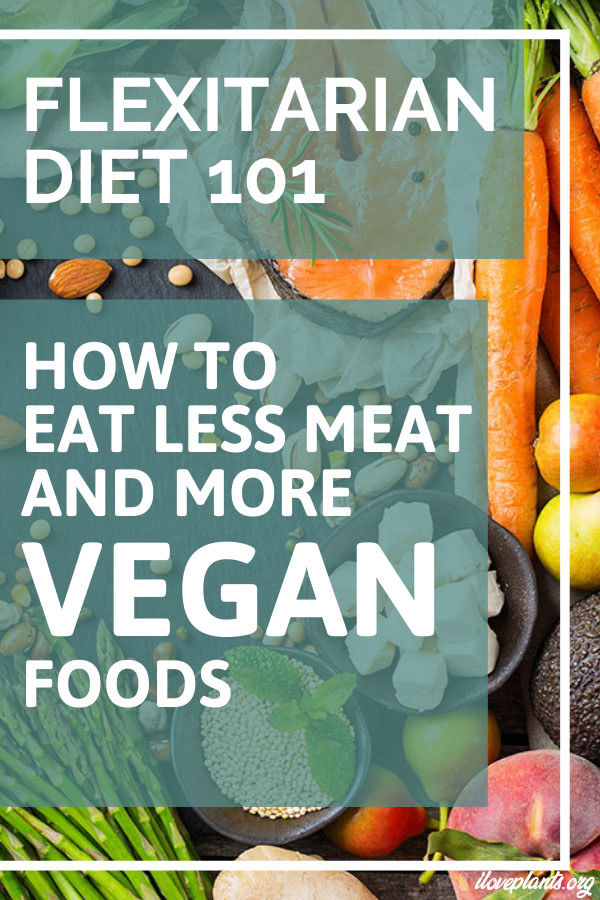Are you looking for a way to reduce your meat intake without fully committing to a vegetarian or vegan lifestyle? Then the flexitarian diet might just be what you need! This semi-vegetarian diet involves a flexible approach to eating, allowing for occasional inclusion of meat alongside a primarily plant-based diet. Let's dive deeper into this popular diet and explore what it entails.
Eating Flexitarian: What does it involve?
The flexitarian diet is simply a more flexible way to follow a vegetarian lifestyle, in which you can occasionally consume meat. The diet focuses mainly on plant-based foods like fruits, vegetables, whole grains, and legumes, with the occasional inclusion of meat.
Some people are drawn to this way of eating because it allows for more flexibility than a vegetarian or vegan diet. This may be particularly appealing for those who simply can't commit to a fully plant-based diet. Nevertheless, the flexitarian diet is still predominantly plant-based, with meat only appearing occasionally.
Benefits of a Flexitarian Diet
There are numerous benefits to adopting a flexitarian diet. One of the most obvious is that it can help to reduce overall meat consumption, which is not only beneficial for the environment but also for our health. The flexitarian diet encourages the consumption of more fruits, vegetables, and whole grains which are full of essential nutrients and vitamins.
A flexitarian diet can also be an excellent way to lose weight. Plant-based foods tend to be lower in calories and high in fiber, which can help you to feel fuller for longer. This makes it easier to manage portion sizes and reduces the likelihood of overeating.
Additionally, a flexitarian diet can contribute to some of the most significant health benefits. Studies have shown that plant-based diets can lower the risk of chronic diseases like heart disease, type 2 diabetes, and certain types of cancers.
Foods to Eat on a Flexitarian Diet
Following a flexitarian diet is straightforward. The primary focus is on a plant-based diet with the occasional addition of meat. Here are some of the foods that you should include in your diet if you're considering this dietary approach:
Fruits and Vegetables:

Fruits and vegetables should make up the bulk of a flexitarian diet. These foods are packed with nutrients, fiber, and antioxidants, making them an essential part of any healthy diet.
Whole Grains:

Whole grains like quinoa, brown rice, and oats are fiber-rich sources of carbohydrates that can keep you fuller for longer. Sprouted grain bread is also an excellent option for a healthy sandwich.
Legumes and Beans:

Legumes and beans are excellent sources of protein, fiber, and essential minerals. Some of the best choices in this category include black beans, chickpeas, lentils, and kidney beans.
Meat and Fish:

While not the primary focus of a flexitarian diet, meat and fish can still be included in moderation. Meat should be lean and preferably organic, while fish should be sourced sustainably.
How to Follow a Flexitarian Diet
Adopting a flexitarian diet is all about finding a balance that works for you. Here are some tips to help you get started:
Start Slowly:
If you're used to eating meat daily, jumping into a fully plant-based diet could be challenging. Start by reducing your meat intake gradually, aiming for two or three vegetarian meals per week and increasing from there over time.
Get Creative:
Flexitarian diets rely heavily on plant-based foods, so it's essential to get creative with your cooking. Experiment with new recipes that include plenty of fruits, vegetables, and legumes.
Buy Organic and Sustainably Sourced Foods:
When including meat and fish in your diet, make sure to choose organic, pasture-raised meat and sustainably sourced fish. This way, you can ensure that your food choices are in line with your ethical values.
Plan Ahead:
Flexitarian diets are easier to maintain if you plan your meals in advance. This way, you can ensure you're consuming a healthy, balanced diet that includes plenty of nutrient-dense plant-based foods.
In Conclusion
The flexitarian diet offers a flexible approach to plant-based eating that caters to a variety of dietary needs and lifestyles. By incorporating more fruits, vegetables, whole grains, and legumes into your diet while reducing your meat intake, you can achieve a healthy, balanced diet that supports optimal health and wellbeing.
